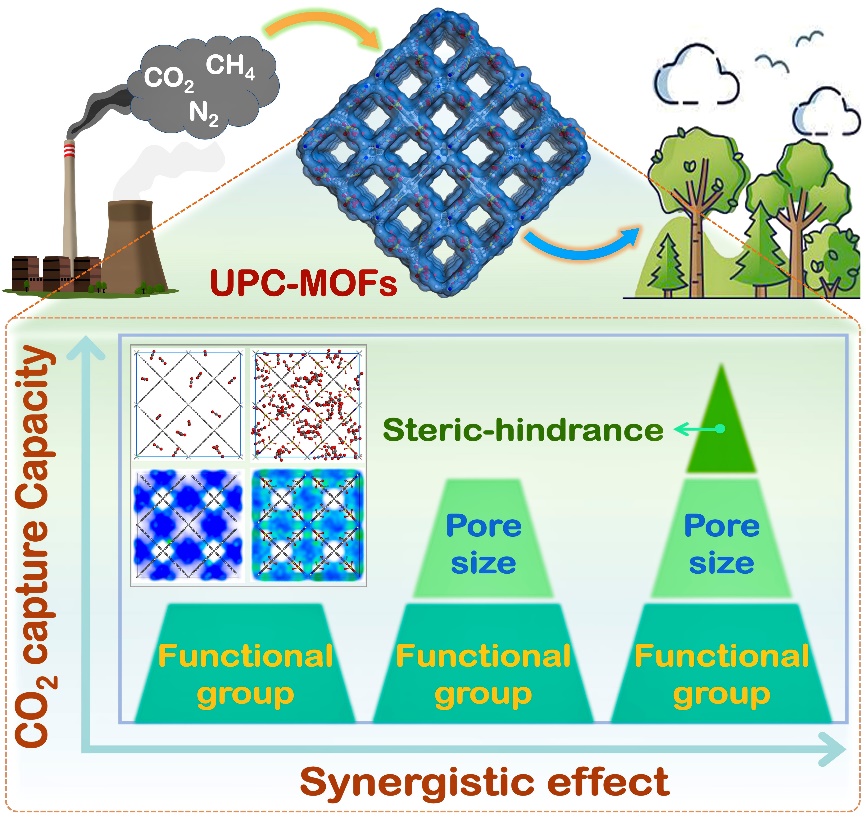近日,课题组硕士生刘森论文“Enhanced CO2 capture in partially interpenetrated MOFs: Synergistic effects from functional group, pore size, and steric-hindrance”被Journal of Colloid and Interface Science(IF=9.90)接收!

Abstract
Excessive CO2 emissions have contributed to global environmental issues, driving the development of CO2 capture adsorbents. Among various candidates, metal-organic frameworks (MOFs) are considered the most promising due to their unique microporous structure. Herein, a series of partially interpenetrated MOFs named UPC-XX were built to investigate the continuous enhancement in CO2 capture performance via synergistic effects from functional group, pore size, and steric-hindrance using theoretical calculations. It’s showed that the introduction of functional groups improved the structure polarity and created more adsorption sites, thus, enhanced CO2 capture capacity. The pore size modification augments the exposure of adsorption sites to mitigate the negative impact of pore space and surface area reduction caused by the introduction of functional groups, thereby further increasing the CO2 capture capacity. The steric-hindrance effect optimized the adsorption sites distribution, which hasn’t been considered in the previous two regulation strategies, thus, further increased the CO2 capture capacity. The results underscore UPC-MOFs as outstanding adsorbent materials, among the UPC-MOFs, UPC-OSO3-steric exhibited the highest CO2 capture capacity of 12.69 mmol/g with selectivities of 1142.41 (CO2 over N2) and 507.42 (CO2 over CH4) at 1.0 bar, 298 K. And the synergistic effect mechanisms of functional group, structure size, and steric hindrance were elucidated through theoretical calculations analyzing pore characteristics, gas distribution, isosteric heat, and van der Waals/Coulomb interactions.
https://doi.org/10.1016/j.jcis.2023.07.058